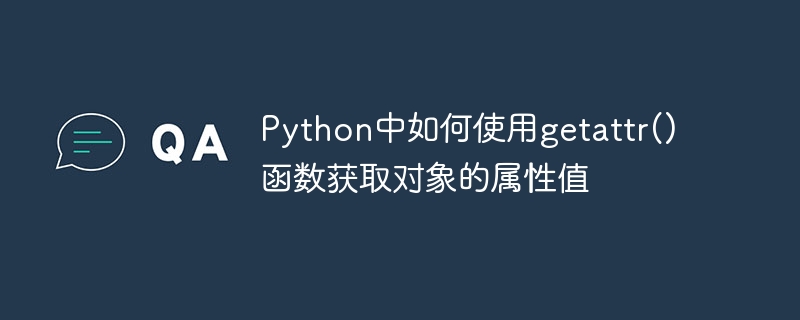
Python中如何使用getattr()函数获取对象的属性值
在Python编程中,我们经常会遇到需要获取对象属性值的情况。Python提供了一个内置函数getattr()来帮助我们实现这个目标。getattr()函数允许我们通过传递对象和属性名称作为参数来获取该对象的属性值。本文将详细介绍getattr()函数的用法,并提供实际的代码示例,以便更好地理解。
getattr()函数的语法如下所示:
getattr(object, name[, default])
其中,object是要获取属性值的对象,name是属性的名称。可选的default参数表示当属性不存在时返回的默认值,默认为None。
立即学习“Python免费学习笔记(深入)”;
那么我们来看几个例子来演示getattr()函数的用法。首先,我们定义一个简单的类Person:
class Person:
def __init__(self, name, age):
self.name = name
self.age = age接下来,我们实例化一个Person对象,并给它定义了name和age两个属性:
person = Person("Alice", 25)现在,我们可以使用getattr()函数来获取对象的属性值。例如,我们可以获取person对象的name属性值:
name = getattr(person, "name") print(name) # 输出:Alice
同样地,我们也可以获取person对象的age属性值:
age = getattr(person, "age") print(age) # 输出:25
我们还可以使用getattr()函数来获取对象中不存在的属性。默认情况下,getattr()函数会返回None。例如,我们尝试获取person对象的gender属性:
gender = getattr(person, "gender") print(gender) # 输出:None
如果我们希望自定义当属性不存在时的默认值,可以使用getattr()函数的第三个参数default。例如,我们定义了一个默认值为"Unknown"的gender属性,然后尝试获取它的值:
gender = getattr(person, "gender", "Unknown") print(gender) # 输出:Unknown
除了通过属性名字符串来获取对象的属性值之外,getattr()函数还可以接受一个可调用对象作为属性名,这个可调用对象将在对象中找到属性名。例如,我们定义了一个函数get_age()来获取person对象的age属性值:
def get_age(obj):
return obj.age
age = getattr(person, get_age)
print(age) # 输出:25需要注意的是,当使用可调用对象作为属性名时,这个可调用对象仍然需要返回正确的属性值。
综上所述,getattr()函数是一个非常有用的函数,它可以帮助我们在编程中获取对象的属性值。我们可以通过传递对象和属性名来使用getattr()函数,并且还可以设置默认值和使用可调用对象作为属性名。希望本文的示例代码可以帮助您更好地理解getattr()函数的用法。
以上就是Python中如何使用getattr()函数获取对象的属性值的详细内容,更多请关注php中文网其它相关文章!

python怎么学习?python怎么入门?python在哪学?python怎么学才快?不用担心,这里为大家提供了python速学教程(入门到精通),有需要的小伙伴保存下载就能学习啦!

Copyright 2014-2025 https://www.php.cn/ All Rights Reserved | php.cn | 湘ICP备2023035733号